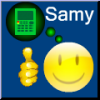Posted 25 February 2011 - 11:22 PM
Goodday,
I am afraid that I can't give you a step by step guide from experience of connecting the specific model of calculator to a specific machine, but I can assist with an overview of the procedures common to most computers in interfacing tasks via usb, and the problems people sometime experience.
There are two principal methods of interfacing USB via software, one involves a terminal program, which manages the sending an receiving of the data to the USB serial chip via a driver interface. The driver interface is a small byte size extension to the operating system, it ostensibly contains a library of routines, which when called by using high level commands from the operating system, directs those commands through to very basic machine code assembly send and receives, all sycronisation speed and configuration parameters are describe exterior to the driver, all the drive does is channel information to a port, with low level machine code commands your serial chip understands.
So principal to interfacing is the requirement to have the correct driver for your usb serial chip set.
Upon boot procedure, the computer os searches out in a process call post. Post is a hardware evaluation task, that tells the operating system above it, what devices are present and what are not, drivers to load, and not as the case may be.
If the post test startup fails to recognise the casio, because your computer does not recognise the casio device as device supported by the operating system, the driver will load and fail the post check, if the casio is connected on reboot, effectively the driver activity is thereby suspended: this can sometime occur, and catch people off guard. The key is to ensure that the correct driver for your casio is installed, on your os and that the casio is not plugged in at the time of rebooting. Once the operating system has fully loaded, the presentation of the casio to the os, will call the driver to check the hardware and thereby recognise the device.
I said that their are TWO interface methods, driver and hardware are required for both.
One method to interface is direct connect, devices such as USB sticks etc, Sony and Phillips cameras and music players feature this, as do some telephones. Direct connect presents your peripheral as a hardware disk, all calls to that device are managed as though it were a disk through the operating system.
The second method to interface requires an application layer which manages the task of serially sending data to and from the driver through the operating system.
This is the program I gather you are experiencing problems with.
While it is necessary not to have external hardware devices present at boot, it may be necessary to have hardware devices present on the startup of the application layer program, ie plug your casio in before running the 124 program.
The advice given before by others is correct. The spring interface on usb peripherals tends to become unreliable with use. It is sometimes required to ensure that the contact springs on USB housing do in fact apply pressure to the the plug and therefore contact is sustained on the gold plated contactors. Failure in this field usually results in unreliable suspensions of os, hangs, failures to recognise peripherals and peripherals vanishing in mid flow, all this can result in the jock suggesting a reinstall of os, when in fact, the problem lies elsewhere.
Once your program is running, and your casio is interfaced, and present, and recognised by the application, file transfer is a matter of following the procedure in the manual for your device. A bespoke application layer taylored to your product usually does not require the user to configure additional parameter to interface a device, third party appliction solutions for hardware interfacing do require greater user experience and knowledge, for example something like the psion link requires the user to set baud start and stop bits, and the bits in the byte, and a protocol, which both devices understand, but this should not be necessary to consider if the application layer is supplied for your hardware peripheral by the manufacturer, they do their best to make things easy for you.







